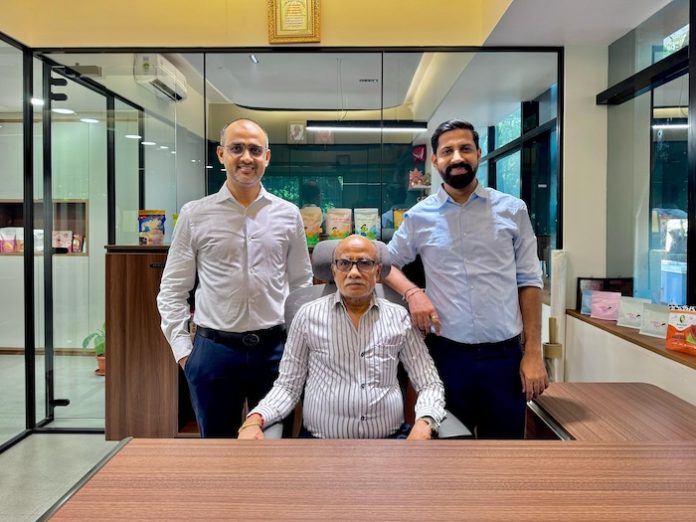
Colorflex Global, a leading flexible packaging manufacturer and exporter based in Bangalore, is undergoing a significant expansion. The new plant is located in Tavarekere, about 10 kilometers from its earlier plant in Machohalli. With a broad product portfolio comprising laminated rolls and an array of pouches — including center-seal, side-seal, and stand-up variants—Colorflex has been a key player in the Indian flexible packaging industry for over a decade.
As part of the transition, the company is moving to a more spacious facility and increasing its production capacity. In 2020, Colorflex increased its monthly capacity from 100 to 500 metric tons with the installation of new equipment. The current expansion aims to double output, bringing the capacity to 1,000 tons a month.
“Although the new plant and machinery setup can support a capacity of 1,000 tons per month, our immediate goal is to reach a productivity level of 500 tons from our current level of 350 tons over the next two years,” said Lalith Jain, director of Colorflex Global, during a recent interaction at the company’s office.

Photo- PSA
One of Colorflex’s major strengths lies in its dominance in the agarbatti (incense stick) segment, with the importance of Bangalore and Mysore as major hubs for agarbatti production. Jain said that nearly 50% of Colorflex’s packaging volume goes to agarbatti brands. “Earlier, we were traders supplying agarbatti compound and perfume, so we have longstanding relationships in this sector. Since the start of Colorflex in 2010, it has become synonymous with agarbatti packaging,” he added.
Beyond incense sticks, Colorflex supplies packaging material to various food and non-food sectors. Specialized in shape pouch, during our visit, Jain showed us the variety of pouch types the company produces, including spout pouches, retort pouches, four-side seal pouches, and vacuum pouches. The company also manufactures and supplies shrink labels and laminated roll stocks.
With two pouching machines, Colorflex has significantly expanded its converting capabilities and now operates 18 pouching machines sourced from manufacturers such as Galaxy, XL, Primo, and Mamata. In 2020, it installed a Pelican Solomark 1300 mm rotogravure press, which was Pelican’s first machine installation in Bangalore. Alongside it, Colorflex commissioned a Pelican solventless lamination machine, and a slitter-rewinder and inspection system from Kody Equipment.
The relocation to the new Tavarekere plant began in January 2025, and by April, key equipment including the Pelican press, lamination unit, slitter, and several pouching machines had already been installed. Full operations at the new facility are expected to begin by June 2025.
A new three-layer blown film extrusion line from Rajoo Engineers is being installed at the new plant and is expected to be operational shortly. Additionally, a new XL pouching machine is in the pipeline.
“We plan to run both our old and new plants in parallel for the next six months,” Jain noted. “After that, we’ll evaluate the performance and decide whether to retire the older machines at the Machohalli unit.”
Looking ahead, Colorflex is planning to install a holographic narrow web press with latest technology. Jain further revealed that the company is seriously considering investing in a flat-bottom pouching machine. “It’s a big-ticket investment. You have to be strategic. If you don’t have enough jobs lined up post-installation, the machine becomes a liability,” he said.
EPR and recyclability – a need for clarity and standardization
Jain expressed concerns over the current state of Extended Producer Responsibility (EPR) and recyclability regulations in India, highlighting the lack of clarity and enforcement. “Despite the notification of the EPR guidelines, there is still no clear directive from the government regarding the recycling process or how packaging materials should be managed at the end of their life cycle,” Jain said.
He pointed out that for a robust recycling ecosystem to flourish, it’s not just policies that are needed, but incentives and benefits as well. “If we are serious about improving recyclability, there has to be an ecosystem that supports it—from policy to infrastructure, and also by encouraging innovation in plastic materials and their recycling processes.”
Jain emphasized the central role of plastic in packaging and said that the focus should not be on eliminating plastic altogether but rather on innovating within its usage and improving its end-of-life management. While acknowledging that EPR policies do exist on paper, Jain criticized the lack of transparency in waste collection and pollution control mechanisms.
“Since we, as packaging converters, are not directly involved in the recycling process, we have no visibility into whether the collected waste is actually being sent to recycling plants or how effectively the system is functioning,” he explained.
Drawing a parallel with the Goods and Services Tax (GST), which unified multiple taxes under a single structure, Jain called for a similar standardization in recycling and packaging regulations. “Just as GST streamlined taxation, we need centralized, transparent, and enforceable rules for packaging and waste management.” He further suggested that film thickness standards for different packaging applications should be clearly defined and strictly regulated. “There should be fixed specifications, and any deviation must attract penalties. That’s the only way to bring discipline and accountability into the system.”









